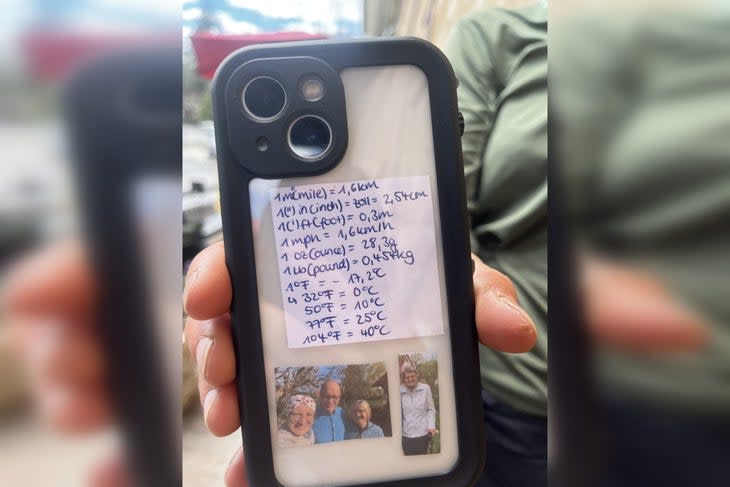The Pacific Crest Trail Just Got More International Than Ever
This article originally appeared on Backpacker
As Backpacker's 2023 Pacific Crest Trail correspondent, David Gleisner is reporting on this year's PCT season as he attempts a thru-hike of his own
Christin "Edelweiss" Loeffel's first taste of the Pacific Crest Trail came from her neighbor in Rheinland-Pfalz, Germany. He had flown out to the U.S. to hike the trail and started a blog about the experience. Edelweiss followed along from the other side of the world, dreaming of doing the trail herself while she studied for her university exams.
Four years later, the end of a work contract gave her the chance to finally go live her dream. After securing her permit, visa, flights, and travel insurance, Edelweiss made it to Campo. Around a table in Tehachapi, one month and 566 miles later, when I asked her and three other hikers from New Zealand and Switzerland if they were surprised by the amount of other international hikers they had met, they looked at each other and laughed. Yes, they agreed. They were.
I've heard the theory over and over again: Because of the less-than-ideal conditions this year, a lot of prospective thru-hikers chose to bail, pushing their hikes off to another year. For Americans, this decision can be relatively easy-permits are free, and flights can be canceled or changed. For international hikers, however, a lot more goes into a PCT thru-hike. With a visa, travel insurance, overseas flights, and more, the vast majority of hikers from outside of the U.S. have chosen to stick it out. What this has meant is that, in a relatively quiet year on the PCT, the trail is truly cosmopolitan.
According to the Halfway Anywhere PCT survey, the percentage of American hikers on the trail over the past 6 years has hovered between 60-70%, Covid’s early years excepted. Although we don't yet have statistics for this year, I and many hikers around me have observed closer to a 50-50 split between Americans and internationals. In my first month on trail, I've met hikers from Germany, New Zealand, Australia, the UK, Canada, France, Italy, Switzerland, Taiwan, China, the Netherlands, Belgium, Poland, the Czech Republic, Israel, Denmark, Norway, and plenty of other places around the world.
"It's nice to have a lot of other internationals because there's so many things you don't know about the U.S.," Selina Reichert of Wellington, New Zealand says. "I've lived here before but there's still things that are foreign or unfamiliar, and it's nice to have others to figure it out with."

Tramilies made up of solely international hikers abound, helping each other through the highs and lows of the trail as they discover it together. A common language can help moderate the culture shock, providing some relief from the stresses of communicating on trail.
"I'm really happy if I can speak German. I've traveled for over a year now, so sometimes I'm tired of speaking English," Sandra Baer of Zurich, Switzerland says. "I met one older German and he could barely speak English, but there were so many people who helped him."
This can be a bit of a double-edged sword, though, especially for Germans, who make up the largest percentage of foreign hikers.
"In the first week, I had a group and we were almost only Germans, so the language we spoke was German," Edelweiss says. "I want to meet other people from other countries and learn about other cultures. But I think a lot of Germans feel like this too, they don't just want to stick with the other Germans."
From an American point of view, I can say that I've been pleasantly surprised by the amount of intercultural exchange I've been able to have on trail so far. From relatively innocuous chat about slang and food to deeper discussions about economic inequality and sexism, being able to hear new perspectives helps add to the vibrant trail community.
But although the PCT Class of 2023 is thoroughly multinational, that hasn’t translated into increased racial diversity. Data from past years show that about 90% of PCT thru-hikers are white, and in my experience this year is not much different. Barriers to access like the high cost of gear and transportation, the need to take time off work, and a lack of familiarity with the trail mean that the PCT remains inaccessible to many.
Even for the international hikers now on the trail, the PCT once seemed out of reach. Hannah "Slide" Parker of Auckland, New Zealand first heard about the trail through the 2014 movie "Wild", based on the Cheryl Strayed book of the same name. The trail piqued her interest, but the logistics seemed complicated.
"I'd looked into it and I was like 'This is too hard, you have to send resupply boxes, you kinda need a U.S. address, you need family to help you out,'" Slide says.
But more than one month in, the international hikers I've talked to shared one common piece of advice: Don't stress so much about planning.
"You don't have to plan any trail things," Slide says. "You have to plan your flights, insurance, visa, sort out your home situation. You just need to get yourself here... and to have backpacked and used your gear before. You don't have to plan the trail in advance"
For exclusive access to all of our fitness, gear, adventure, and travel stories, plus discounts on trips, events, and gear, sign up for Outside+ today.

